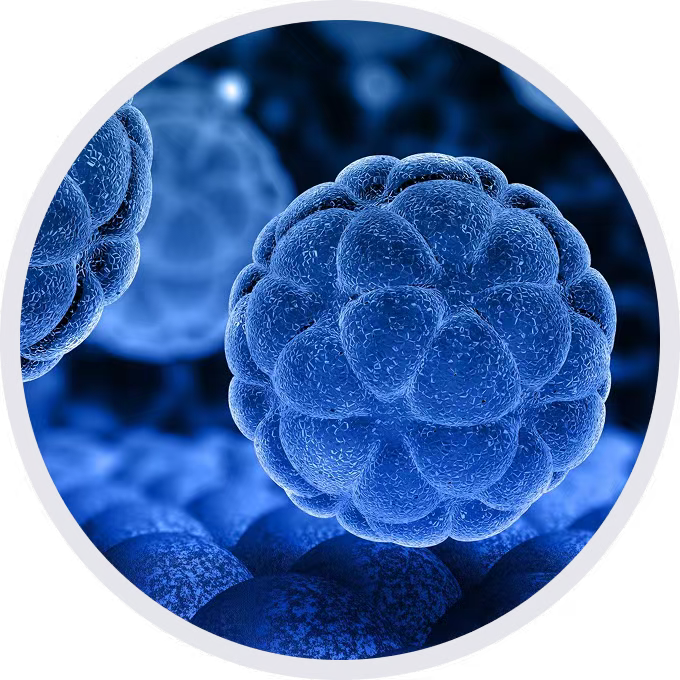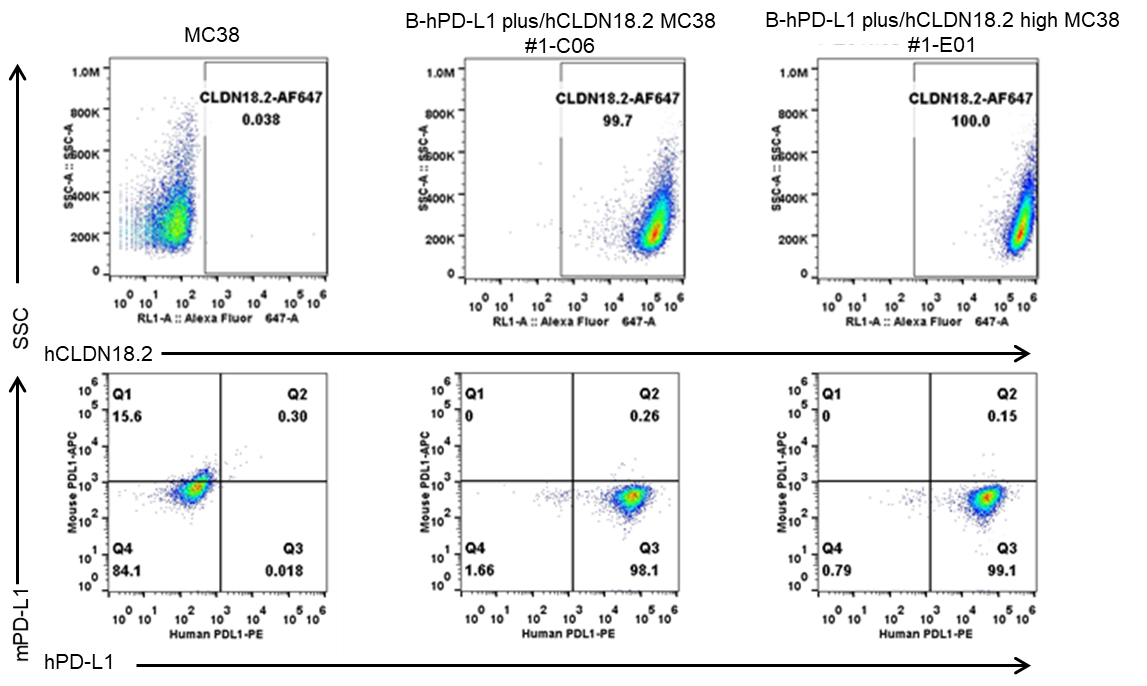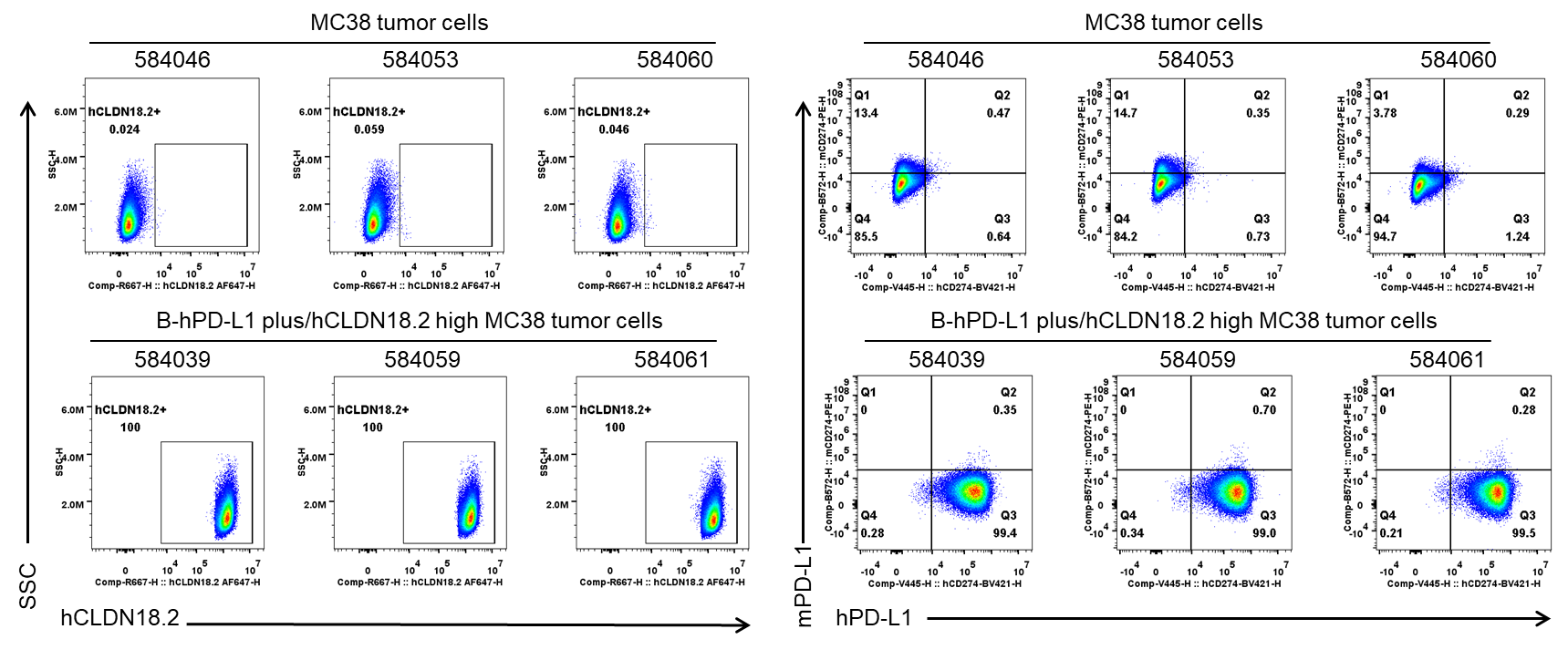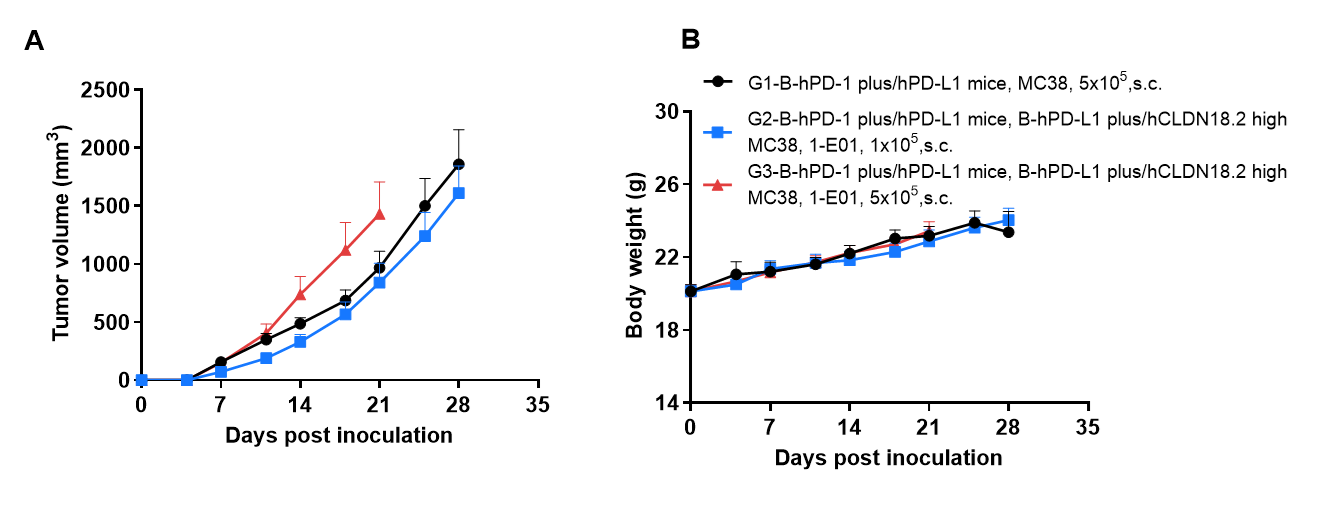
• 322425

| Product name | B-hPD-L1 plus/hCLDN18.2 high MC38 |
|---|---|
| Catalog number | 322425 |
| Strain background | C57BL/6 |
| NCBI gene ID | 29126,51208 (Human) |
| Chromosome | 19, 9 |
| Aliases | B7-H; B7H1; PD-L1; PDCD1L1; PDCD1LG1; PDL1; hPD-L1; SFTA5; SFTPJ; hPD-L1; SFTA5 |
| Tissue | Colon |
| Disease | Colon carcinoma |
Inoculated cell lines can be suspended with DMEM stock solution.
Before implementing the project, it is recommended to perform tumor growth experiments. The recommended cell inoculation amount is between 1E5-5E5.
In the experiment, it is necessary to ensure that the number of animals inoculated subcutaneously is at least 1.6 times the actual grouping number.

CLDN18.2 and PD-L1 expression analysis in B-hPD-L1 plus/hCLDN18.2 high MC38 cells by flow cytometry. Single cell suspensions from wild-type MC38 and B-hPD-L1 plus/hCLDN18.2 high MC38 #1-E01 cultures were stained with anti-CLDN18.2 antibody (in house) and anti-PD-L1 antibody (Biolegend, 329706; Biolegend, 124312). Human CLDN18.2 and human PD-L1 were detected on the surface of B-hPD-L1 plus/hCLDN18.2 high MC38 cells but not wild-type MC38 cells.

CLDN18.2 and PD-L1 expression evaluated on B-hPD-L1 plus/hCLDN18.2 high MC38 tumor cells by flow cytometry. B-hPD-L1 plus/hCLDN18.2 high MC38 cells were subcutaneously transplanted into B-hPD-1 plus/hPD-L1 mice (n=6). Upon conclusion of the experiment, tumor cells were harvested and assessed for CLDN18.2 (in house) and PD-L1 (Biolegend, 329714; Biolegend, 124308) expression by flow cytometry. As shown, human CLDN18.2 and human PD-L1 were highly expressed on the surface of tumor cells. Therefore, B-hPD-L1 plus/hCLDN18.2 high MC38 cells can be used for in vivo efficacy studies evaluating novel CLDN18.2 therapeutics.

Subcutaneous tumor growth of B-hPD-L1 plus/hCLDN18.2 high MC38 cells. B-hPD-L1 plus/hCLDN18.2 high MC38 cells (1×105, 5×105) and wild-type MC38 cells (5×105) were subcutaneously implanted into B-hPD-1 plus/hPD-L1 mice (female, 7-week-old, n=6). Tumor volume and body weight were measured twice a week. (A) Average tumor volume. (B) Body weight. Volume was expressed in mm3 using the formula: V=0.5 × long diameter × short diameter2. Results indicate that B-hPD-L1 plus/hCLDN18.2 high MC38 cells were able to establish tumors in vivo and can be used for efficacy studies. Values are expressed as mean ± SEM.